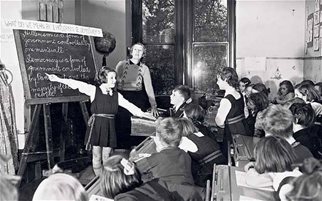Playing is Learning
Highlights of Co-education in the US Universities
October 17th, 2016
| Ads | ||
|
Play the Challenge
|
||
|
A New Word is Coined A new Character is revealed A new Game is Afoot |
An Edutainment Adventure Based on Three Rounds of Investigations
|
|
|
Welcome to the World of PROFESsee™by seeCOSM™ PROFESsee™ is my title. I am the perpetual learner, in pursuit of knowledge, wisdom and truth. I derived my name from professor |
 |
|
|
Once upon a time in the old United States and most of the world for that matter, women were denied university education simply because they were women. Even those allowed to have some measure of collegiate experience never learnt side by side the men. Talk about four leg good, and two legs bad. And in others whose charters evidently supported co-education, took years before women had a place in such institutions. And much of this silliness endured till the early 19th Century where the “co” not only became a prefix for education but became a reality for getting women the education they deserved. Fast forward or backward if you like, Oberlin College became chattered in 1833 and was the first college to admit women into its four walls (not entirely sure about that) albeit not into the full collegiate program. They had what the college called the “Ladies Course”, and the “ladies” were awarded diplomas for their efforts. That changed in 1837 when they opened the course worthy of Bachelor’s degrees to the women. Four years later, four women received their bachelor’s degrees from the college – a first in the United States. And this had a domino effect on the chances of co-educational colleges growing in the US, although not at the instantaneous effect of dominos, but the growth was indeed steady and continuous. In 1944, Hillsdale College also began admitting women into their four-year bachelor programs. With growing pressure and consistent efforts from some women, women groups and egalitarian-focused groups, the University of Iowa became the first government-owned college to embrace the co-educational trend. One of the foundations of the pressure came from the 1848 Seneca Falls Convention held in New York. The convention heralded itself as "a convention to discuss the social, civil, and religious condition and rights of woman". With single-sex education colleges switching to co-educational status, and increased establishment of co-educational colleges around the US, especially in the Mid West – Ohio in particular, it was only a matter of time before it became mainstream, and ratified into the constitution. Lo and behold, Title IX was borne, which drilled a big Tornado nail into the coffin of single-sex education, at least in government-owned institutions. A part of Title IX which reads “No person in the United States shall, on the basis of sex, be excluded from participation in, be denied the benefits of, or be subjected to discrimination under any education program or activity receiving federal financial assistance” is the major highlight of co-education in the US universities. Can you Zoom to the correct AUB faculties? Image courtesy of: http://www.telegraph.co.uk/education/secondaryeducation/9028486/Co-ed-education-A-lesson-in-growing-up-together.html |
||
Latest News / Events
E-mail [email protected]
The Professee™ Newsletter Beta
http://www.seecosm.com/
http://www.seecosm.com/

